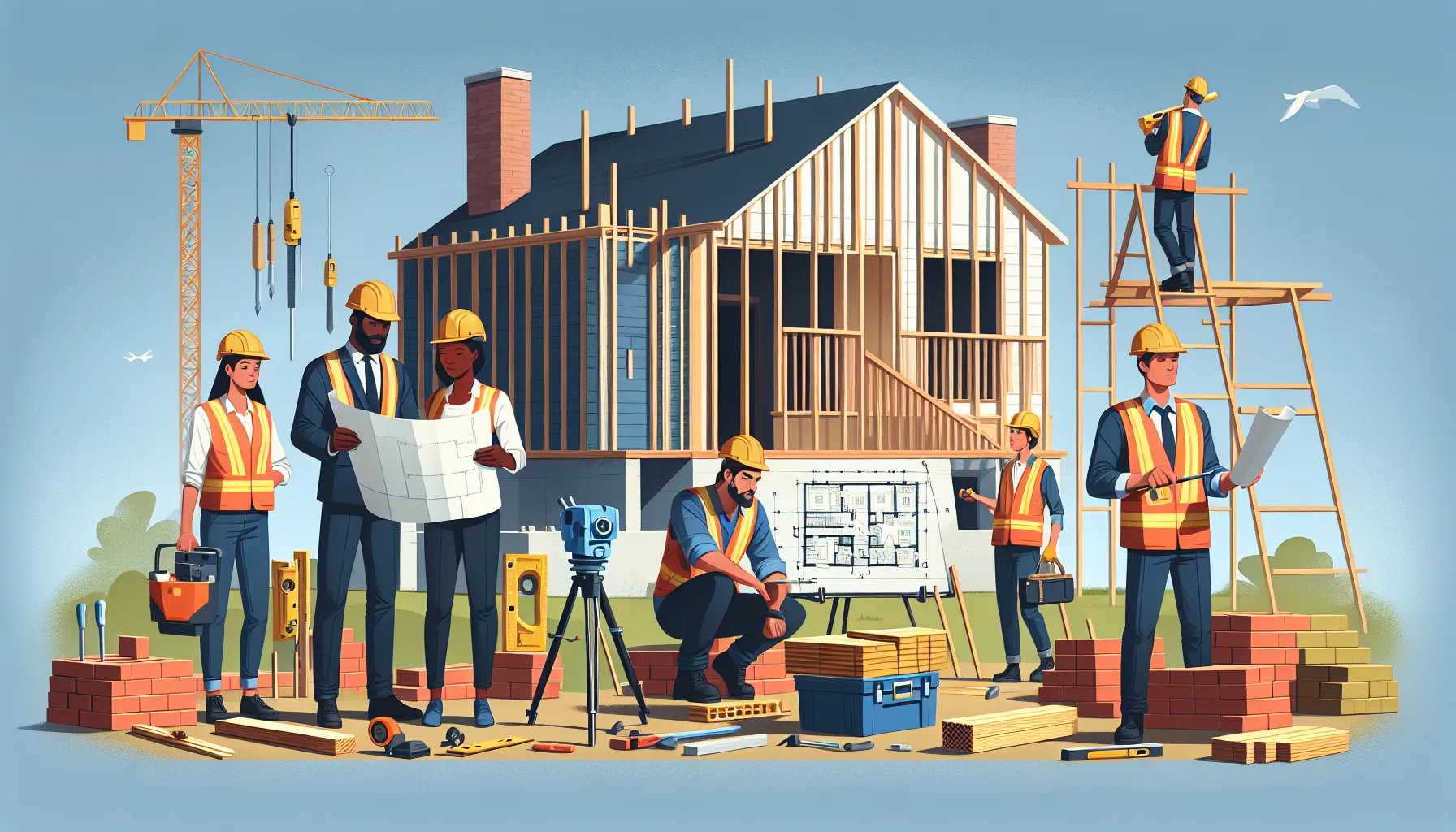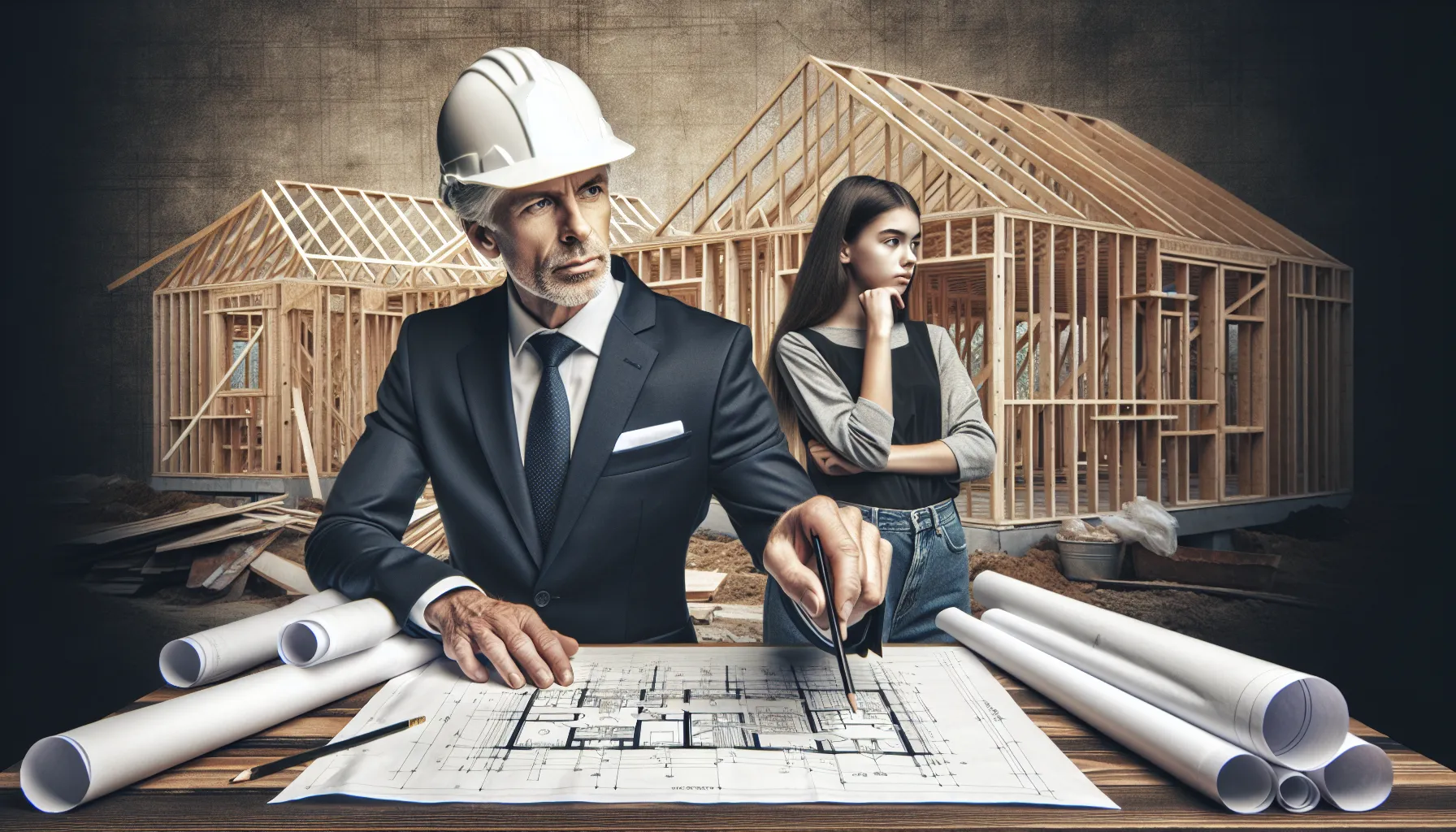Key Takeaways
- Average Construction Costs: Building a house typically ranges from $100 to $200 per square foot, with a 2,000-square-foot home costing between $200,000 and $400,000, influenced by location and materials.
- Significant Land Expenses: Land acquisition costs can vary dramatically by region, often necessitating additional site preparation and closing costs, which can add 5% to 15% to the total budget.
- Labor and Material Costs: Labor generally accounts for 30% to 50% of construction expenses, while materials can comprise 50% to 70%, emphasizing the need for detailed estimates and careful budgeting.
- Permitting & Inspection Fees: These costs are essential for compliance with local building codes and can significantly impact budgeting, ranging from a few hundred to several thousand dollars.
- Utility Connections & Landscape: Utility connection fees can reach up to $15,000, while landscaping and exterior features typically range from $1,500 to $5,000, showcasing additional expenses beyond traditional construction costs.
- Plan for Contingencies: Set aside approximately 10% of your budget for unexpected costs, as fluctuations and surprise expenses are common during the home-building process.
Building a house is an exciting journey, but it can also be overwhelming when it comes to understanding the costs involved. From land acquisition to final finishes, the expenses can add up quickly. We all want to make informed decisions, but how do we break down these costs effectively?
Overview of Building a House Costs
Understanding the costs involved in building a house is essential for effective financial planning. On average, the total expense can range from $100 to $200 per square foot, depending on various factors like location and materials used. For instance, a 2,000-square-foot home could cost between $200,000 and $400,000. These figures serve as a baseline, but they can increase based on additional features or customizations.
Land acquisition represents one of the most significant expenses. Costs vary immensely based on region, with urban areas commanding higher prices than rural settings. We find it important to research local market trends, which can reveal average land costs in specific neighborhoods. Additionally, site preparation expenses can add anywhere from 5% to 15% to the overall budget, depending on the terrain and necessary permits.
Construction costs, typically the bulk of the budget, comprise labor and materials. Labor can account for 30% to 50% of total costs, varying by contractor fees and project size. Material costs often fluctuate with market demand, so we recommend requesting detailed estimates from multiple suppliers. Moreover, it’s prudent to budget for a contingency fund, ideally 10% of anticipated expenses, to cover unforeseen costs or changes during construction.
Finishing touches, including landscaping and interior design, can significantly impact the overall budget. High-quality finishes might increase costs substantially, while more economical options can help manage expenses. Selecting fixtures, appliances, and flooring materials requires balancing personal preferences with budget constraints. By clearly outlining all potential costs, we empower ourselves to make informed decisions that align with our financial goals.
Land Purchase Costs

Land acquisition constitutes a major expense in building a house. The costs vary significantly depending on location, zoning regulations, and market demand. Urban land often commands higher prices due to proximity to amenities, while rural plots tend to be more affordable. Understanding these factors helps us gauge overall expenses more accurately.
Factors Influencing Land Prices
Several factors impact land prices. Location plays a key role; properties near urban centers typically have higher demand, leading to increased prices. Availability of local infrastructure, such as schools, roads, and utilities, can also drive costs up. Additionally, zoning laws affect how land can be developed, influencing its value. For instance, land zoned for commercial use usually costs more than residentially zoned land. Market trends, such as supply and demand dynamics, further affect pricing. Researching specific neighborhoods provides a clearer picture of local pricing.
Additional Land-Related Expenses
Besides the direct purchase price, several additional expenses accompany land acquisition. Closing costs, which include title insurance, transfer taxes, and attorney fees, typically range from 2% to 5% of the property’s purchase price. Site preparation costs are essential for making raw land livable; this may involve clearing trees, grading, or installing drainage systems. Such expenses can add 5% to 15% to our overall budget. We must also consider property taxes, which vary by location, as well as any homeowners’ association fees if applicable. Each of these factors contributes to the final cost of land ownership and must be factored into our overall financial planning for building a house.
Construction Expenses

Understanding construction expenses is vital in planning a home-building budget. These costs encompass labor, materials, and regulatory fees, each contributing significantly to the overall expenditure.
Labor Costs
Labor costs represent a significant portion of construction expenses. Typically, labor accounts for 30% to 50% of the total budget. The rates fluctuate based on the region and the complexity of the project. For instance, skilled labor in urban areas often demands higher wages compared to rural locations. Hiring specialized tradespeople, such as electricians and plumbers, can also increase expenses due to their expertise and licensing. It’s essential to obtain detailed estimates from contractors to set realistic labor budgets that reflect local rates and the scope of work.
Material Costs
Material costs encompass everything from structural components to finishing touches. Materials usually represent a substantial portion of the overall costs, often ranging from 50% to 70% of the construction budget. Prices can vary widely based on quality, supplier, and market demand. For instance, opting for energy-efficient windows or sustainable materials may increase upfront costs but could offer long-term savings on utilities. To ensure the best pricing, we recommend seeking multiple quotes from suppliers, specifying your desired materials, and planning for potential price fluctuations due to market changes.
Permitting and Inspection Fees
Permitting and inspection fees are often overlooked but are crucial in the construction budget. These costs ensure compliance with local building codes and regulations, which vary by state and municipality. Typically, permits can range from a few hundred to several thousand dollars, depending on the project’s size and scope. Additionally, inspection fees may apply throughout the construction process, ensuring that building practices meet safety standards. Understanding local regulations and incorporating these expenses into the budget helps prevent delays and unexpected costs. It’s advisable to consult with local building departments early in the planning process to accurately gauge these fees.
Additional Costs to Consider
Building a house involves expenses that extend beyond the obvious construction costs. We must consider several additional charges that can significantly impact the overall budget.
Utility Connections
Utility connections comprise one of the essential but often overlooked expenses in building a house. Connecting to local water, sewage, electricity, and gas lines can cost between $3,000 to $15,000, depending on proximity to existing connections and local rates. Some regions may require upgrades to infrastructure, increasing installation expenses. Understanding these costs upfront allows for a more accurate budget assessment and prevents surprises later. Consulting with utility companies during the planning phase can provide clarity on potential fees and timelines, facilitating smoother project execution.
Landscaping and Exterior Features
Landscaping and exterior features enhance a home’s curb appeal and overall value. Budgeting for landscaping generally ranges from $1,500 to $5,000, depending on design complexity and materials chosen. Features like patios, decks, and fencing can add several thousand dollars to the project. Thoughtful landscaping not only contributes aesthetics but also fosters functional outdoor spaces for relaxation and entertainment. We should assess how these enhancements align with our overall vision for the property. Engaging with landscape designers early can yield valuable insights into balancing budget and design aspirations effectively.
Financing Your Home Build
Financing a home build encompasses various options and factors that impact our overall budget. Understanding our mortgage options provides a solid foundation for making informed financial decisions.
Mortgage Options
We can explore multiple mortgage options to finance our home build, each with unique features. Conventional loans, typically requiring a 20% down payment, provide fixed or adjustable interest rates, ensuring predictable monthly payments. FHA loans serve first-time homebuyers, allowing lower down payments and more lenient credit score requirements. VA loans cater specifically to veterans and active military personnel, often eliminating down payments entirely. Construction loans enable financing in stages, releasing funds as we complete various home-building phases. By comparing these options thoroughly, we’ll find a solution that aligns with our financial situation and construction timeline.
Budgeting for Unexpected Expenses
Budgeting for unexpected expenses remains crucial throughout the home-building process. Remodeling projects often encounter unanticipated costs, estimated to range from 5% to 15% of our total budget. These could arise from foundational issues, design changes, or increased material prices. Allocating around 10% of our budget for contingencies creates a safety net, allowing flexibility without derailing our plans. Engaging contractors with transparent communication helps identify potential risks early on. As we factor in these variables, proactive budgeting can lead us to a smoother building experience, reducing stress and maintaining our financial goals.
Conclusion
Building our dream home is an exciting journey filled with numerous decisions and financial considerations. By understanding the various costs involved from land acquisition to construction and finishing touches, we can make informed choices that align with our vision and budget.
It’s crucial to research local market trends and obtain multiple quotes for materials and labor to ensure we’re getting the best value. Setting aside a contingency fund also prepares us for any unexpected expenses that may arise along the way.
With careful planning and a clear understanding of the financial landscape, we can navigate this process successfully and create a home that reflects our unique style and needs.
Frequently Asked Questions
What are the average costs of building a house?
Building a house typically averages between $100 to $200 per square foot. For a 2,000-square-foot home, you can expect costs to range from $200,000 to $400,000. However, these prices can vary based on location, materials, and labor costs.
What major expenses should I consider when building a house?
Key expenses include land acquisition, construction costs (labor and materials), site preparation, permits, and utility connections. It’s essential to budget for these costs to avoid surprises, as they can significantly impact your overall budget.
How important is land acquisition in the home-building process?
Land acquisition is one of the most significant expenses in home building. Costs can vary greatly by region, with urban land often being more expensive than rural land. Additionally, local zoning regulations and infrastructure availability can further influence land prices.
What do construction costs consist of?
Construction costs typically include labor, materials, and regulatory fees. Labor can account for 30% to 50% of the total budget, while materials represent 50% to 70%. Understanding these factors is crucial for effective budgeting.
Why should I budget for a contingency fund?
It’s wise to allocate around 10% of your overall budget for contingency expenses. Unplanned issues, such as design changes or foundational problems, can arise, and having a safety net helps ensure you can handle these surprises without going over budget.
How can I manage materials cost effectively?
To manage material costs effectively, obtain detailed estimates from multiple suppliers. Prices can fluctuate, so comparing quotes helps you find competitive pricing while ensuring you get quality materials for your project.
What additional costs should I consider beyond construction?
Additional costs include landscaping, utility connections, property taxes, closing costs, and homeowners’ association fees. Budgeting for these expenses ensures a comprehensive financial plan for your home-building project.
What financing options are available for building a house?
Various financing options include conventional loans, FHA loans, VA loans, and construction loans. Each type has unique terms and benefits, so comparing them helps you find the best fit based on your financial situation.
How can landscaping affect my budget?
Landscaping can significantly impact your budget, typically costing between $1,500 to $5,000. Engaging with landscape designers early allows you to balance aesthetics and costs, enhancing your home’s curb appeal and overall value.
Why is it essential to research local market trends?
Researching local market trends helps you understand land acquisition costs and construction expenses in your area. This knowledge aids in making informed financial decisions and can prevent unexpected costs in your home-building journey.






